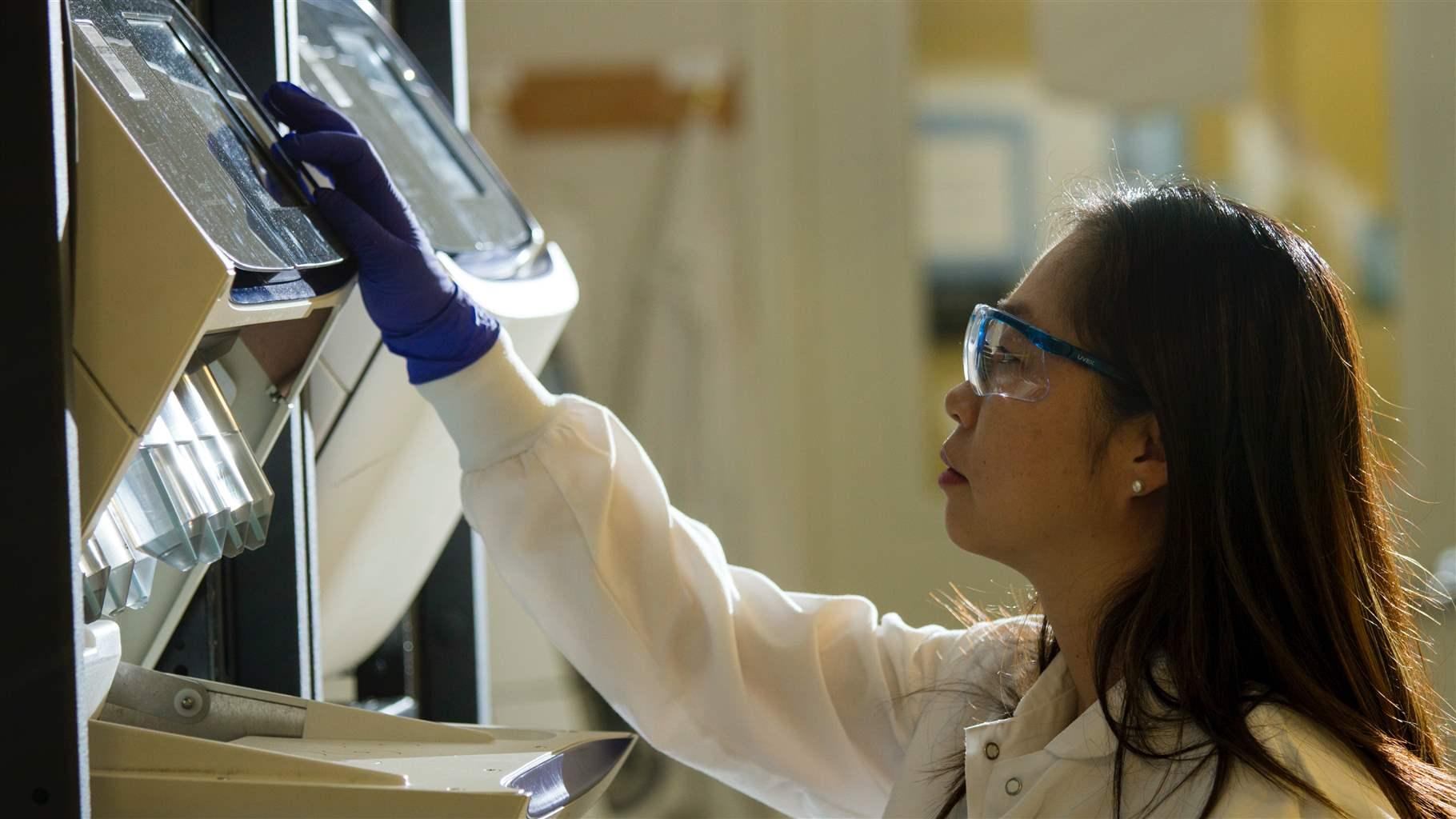Pew-Stewart Scholars Program Marks a Decade of Cancer Research
Scientists cover new ground in understanding the disease and developing innovative therapies

Cancer is one of the greatest challenges facing biomedical researchers today. Despite decades of breakthroughs, including lifesaving therapies and new methods of detecting disease, much work remains to find a cure. The Pew-Stewart Scholars Program for Cancer Research was created in 2013 to help meet this need.
A joint effort between the Alexander and Margaret Stewart Trust and The Pew Charitable Trusts, the program funds early-career scientists leading the charge in cutting-edge cancer research. To date, the program has supported 53 scientists from 26 universities. To mark our tenth anniversary, we’re reflecting on the program’s impact during its first decade as well as the future of cancer research.
What is cancer?
Human health relies on a regular cycle of cell death and renewal. Cancer forms when this process goes awry, causing cells to mutate and spread uncontrollably. Understanding how cancer develops at a cellular level through basic science research is key to finding a cure. Throughout the last decade, numerous Pew-Stewart scholars have dedicated their research to getting to the root cause of cancer.
What can cause cancer?
From exposure to pollutants and chemicals to smoking tobacco products and drinking alcohol, a slew of external factors can increase a person’s chances of getting cancer. Several scholars are uncovering knowledge about the role that environment and lifestyle choices play in disease development.
For example, as a 2016 scholar, Ömer H. Yilmaz, M.D., Ph.D., studied the impact a high-fat diet has on cancer formation by observing how certain diets affect stem cells in the gut and how these interactions cause cancer-promoting changes in the intestines.
How is cancer treated?
Historically, chemotherapy, radiation, and surgery are often used to fight the disease. While these methods are effective, they can come with debilitating side effects. Fortunately, several Pew-Stewart scholars are among those engineering targeted therapies that deliver precise results but are less harmful. For example, 2023 scholar Liron Bar-Peled, Ph.D., is exploring new methods to pinpoint proteins in epithelial ovarian cancer that were previously difficult to treat.
One of the most promising treatments in use today is immunotherapy, which harnesses the power of a person’s immune system to fight cancer. Luisa Escobar-Hoyos, M.Sc., Ph.D., a 2023 scholar, is exploring how a mechanism called alternative RNA splicing in immune cells could improve the efficacy of immunotherapy for pancreatic cancer.
Which cancer is most common?
Of the more than 100 cancer types, the most widespread is skin cancer. When caught early, it’s often easy to eradicate with surgery. But undetected, skin cancer can spread to other parts of the body and become deadly. Last year, Pew spoke with 2022 scholar Alexander Huang, M.D., whose lab is exploring how the immune system responds to—and resists—a new immunotherapy for skin cancer.
Which cancer is the deadliest?
Lung cancer is often only detected once it’s reached the later stages, resulting in a very low survival rate. Piro Lito, M.D., Ph.D., and Stefani Spranger, Ph.D., both 2019 scholars, are among those who have uncovered new information about how to improve lung cancer treatment and outcomes. Some of Lito's work has focused on uncovering the properties of KRAS mutations commonly linked to lung cancer while Spranger has previously explored why only a subset of patients respond well to immune checkpoint blockade—a promising immunotherapy.
How about pediatric cancer?
Children can also get cancer, but the types and treatments differ from those that adults have. Acute myeloid leukemia (AML) is one of the most common pediatric cancers, and while adults can also get it, there are distinct genetic factors causing the disease in the two age groups. Elvin Wagenblast, Ph.D., a 2023 Pew-Stewart scholar, is researching this difference to better understand AML development and treatment in children.
As a 2016 Pew-Stewart scholar, Paul A. Northcott, Ph.D., studied medulloblastoma—an aggressive brain cancer common in children that often returns after initial treatment and becomes fatal. To better understand this rebound effect, Northcott studies the genetic differences between before-treatment and after-treatment tumors.
What are some challenges facing cancer researchers?
Cancer cells are resilient, and their ability to adapt in the face of new therapies makes the disease difficult to eradicate. While there’s a slew of effective treatments, it’s not uncommon for those methods to stop working once cancer cells develop immunity to the drugs. Several Pew-Stewart scholars are researching the cellular mechanisms that cause drug resistance. For example, 2022 scholar Christina Towers, Ph.D., uses cutting-edge technologies to explore how cells rewire their metabolic processes to become resilient to drugs, with the goal of pinpointing previously unidentified mechanisms that contribute to resistance.
What new innovations are on the horizon?
The advent of new technology over the past decade has provided researchers with unique tools for exploring possibilities using computational approaches. Alexander Bick, M.D., Ph.D., a 2022 scholar, is working on an algorithm to identify why and how a subset of hematopoietic stem cells (precursor cells that develop into different blood cells) become precancerous with age. His work, using large patient datasets, could improve early detection methods. And even the brave new world of artificial intelligence is being harnessed to treat cancer. David Van Valen, M.D., Ph.D., a 2021 scholar, is using it to analyze cellular images of different cancer types—knowledge about tumor structure that will help his lab predict and refine treatment outcomes.
These highlights from a decade’s worth of cancer research, in partnership with the Alexander and Margaret Stewart Trust, show a breadth of scientific work and approaches. And they’re just the beginning—what innovations and achievements will the program’s second decade hold?
Donna Dang works on The Pew Charitable Trusts’ biomedical programs.












